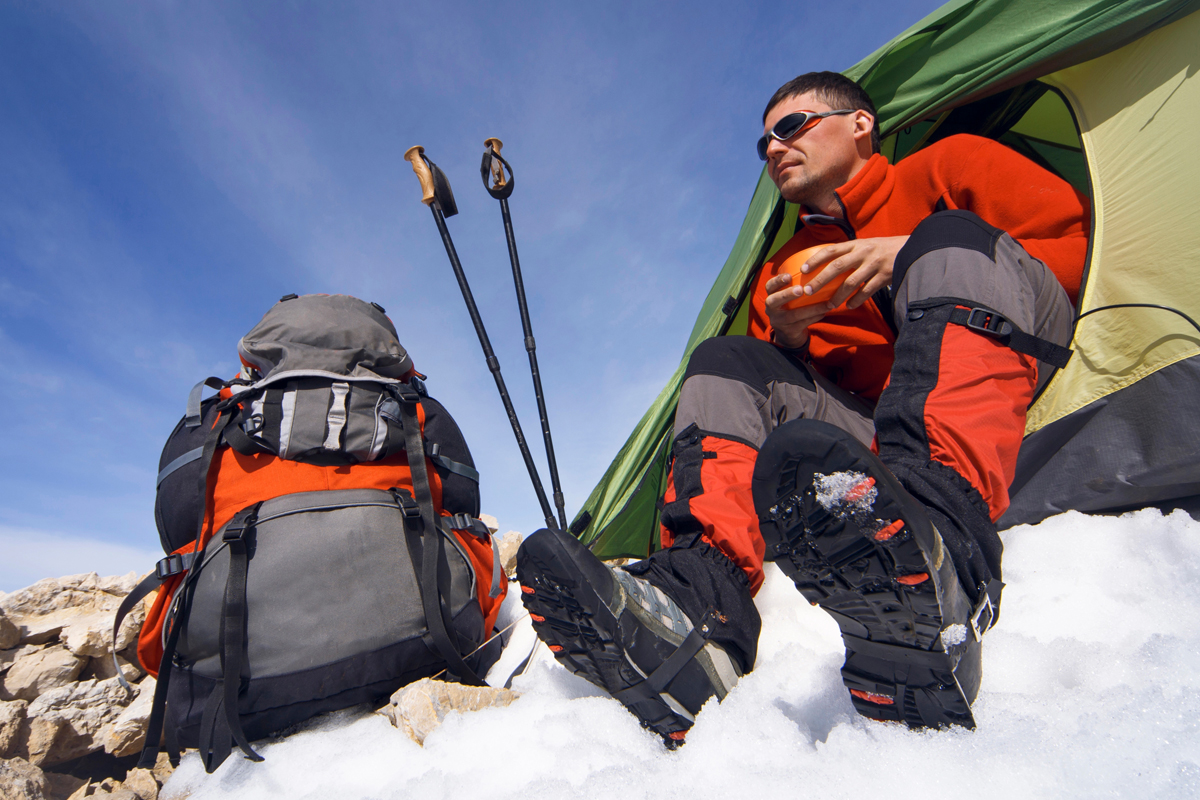Rugged mountains, polar regions or desert expanses – travelling to these extreme places requires the right gear. It will provide protection, comfort and the ability to cope with any unforeseen situations. Let’s look at how to choose camping equipment for extreme conditions.
Tent: protection from the weather and the elements
The tent is the first element of equipment for extreme hiking. It should provide reliable protection from wind, rain, snow and other external factors.
Durability and stability
A tent for extreme camping should be equipped with a reinforced frame. Pay attention to the number of support arcs and the construction of the frame. Stronger materials will help the tent withstand powerful gusts of wind or snow load.
Waterproofness of the tent
When choosing a tent, make sure that the tent has a high water resistance rating. This is especially important in mountainous climates and the tropics where it can rain heavily.
Tent weight
Lightness and compactness are important parameters for any traveller. But in extreme conditions, you can’t sacrifice quality for minimum weight. The ideal option is a tent that combines strength and relative lightness.
Sleeping bag and mat: insulation and comfort
Overnighting in extreme conditions is a serious challenge for campers. The right sleeping bag and mat can keep you warm and comfortable in cold regions or at high altitudes.
Sleeping bag
In extreme cold conditions, the sleeping bag should be highly insulated. It is important to consider the temperature rating of the sleeping bag – it should be lower than the expected temperatures on the route. Sleeping bags come with down and synthetic fillings. Down sleeping bags provide better insulation, but require careful care and are afraid of moisture. Synthetic sleeping bags are more resistant to moisture but may be inferior in terms of insulation.
Mat
A quality hiking mat provides comfort and extra insulation from the cold ground. For cold conditions, it’s best to choose inflatable or self-inflating mats with a high insulation rating (R-value). In desert or hot conditions, you can use lighter and more compact models that will provide minimal comfort.
Cooking and eating: equipment for extreme conditions
In extreme trekking, proper food organisation is a survival factor. Cooking food in harsh conditions is difficult, so it is important to choose reliable equipment for cooking and storing food.
Gas and multi-fuel burners
At high altitudes or in arctic zones, conventional gas burners may not do the job. This is where multi-fuel burners, which can run on different fuels (gas, petrol, paraffin), come in handy.
Lightweight and sturdy woks
Cooking utensils should be lightweight and compact, yet durable. A set made of titanium or aluminium with a non-stick coating is ideal.
Water filtration systems
Water filters should be compact, lightweight and efficient. Consider filtration systems that can be built into flasks or used standalone, such as pump filters or UV-based purification systems.
Emergency gear and tools
No matter how thoroughly prepared you are, emergencies can arise in extreme conditions. It is important to carry emergency gear and tools.
First aid kit
It should include bandages, antiseptics, painkillers, frostbite and burns. In cold climates it is useful to supplement the first aid kit with thermal film or special warming packs.
Multitools and knives
Multifunctional tools (multitools) will help in equipment repair, camp preparation and other tasks. A reliable knife and multitool will allow you to cope with many unexpected situations, such as a tent breakage or the need to quickly process wood for the fire.
Rescue systems
In high altitude or polar expeditions, it is useful to have a satellite tracker or GPS beacon for emergency communication. In extreme areas with no mobile phone service, this may be the only way to signal a distress call.
Remember that the right equipment can help you feel safe and secure even in the harshest conditions, whether in the mountains, deserts or Arctic ice.


